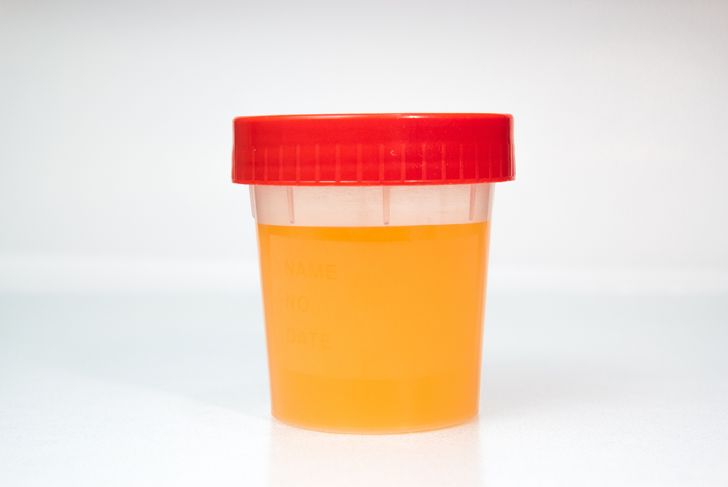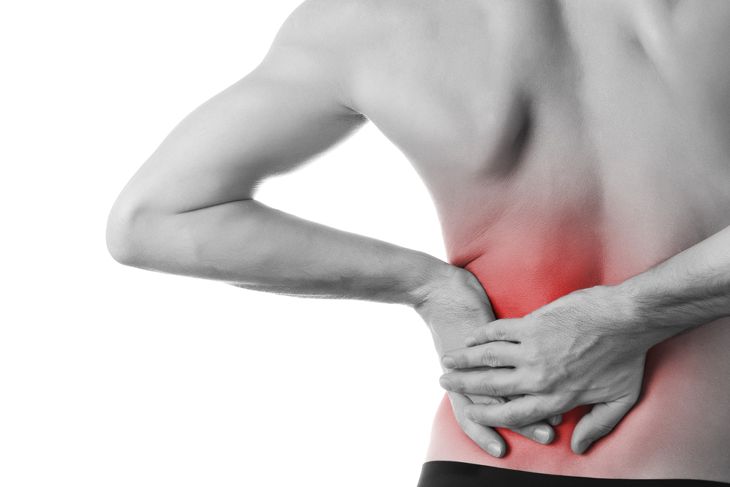Rhabdomyolysis is a potentially life-threatening condition that occurs when damaged muscle tissue breaks down and releases myoglobin into the bloodstream. Too much myoglobin in the blood can lead to kidney damage or kidney failure. Muscle injuries, drug use, certain genetic disorders, alcohol abuse, and some surgical procedures can all cause this condition. A variety of symptoms can point to rhabdomyolysis.
Discolored Urine
Discolored urine is a common symptom of rhabdomyolysis. Dark or tea-colored urine is often one of the first signs of a problem. Many people mistakenly believe this indicates blood in the urine, which has its own implications. However, when a person has rhabdomyolysis, it is excess myoglobin, not blood, that causes the discoloration.
Muscle Pain and Tenderness
Muscle pain and soreness is another symptom of rhabdomyolysis. It is also not unusual for the affected area to become tender. When there is physical trauma to the muscle, many people assume the injury is the cause of the soreness, and this may be the case in some instances. However, when combined with other symptoms, muscle pain and tenderness may also indicate rhabdomyolysis.
Localized and General Muscle Weakness
Muscle weakness can force the muscles to work harder than usual to carry out basic tasks. People with rhabdomyolysis often also experience general fatigue and lethargy. This occurs because the body is working overtime to correct the excess myoglobin and the problems it causes; as such, it has less energy to direct to muscle movement.
Decreased Urine Output
Because the kidneys function as filters, many people with rhabdomyolysis develop kidney problems. A sudden decrease in the amount of urine the body passes could indicate an issue with the kidneys. This distress could eventually lead to kidney failure, so it is important to see a doctor right away.
Nausea and Vomiting
Protein in the bloodstream changes the blood itself. The resulting imbalance leads to a range of symptoms, including nausea and vomiting. These symptoms can be so extreme that in some cases, doctors initially misdiagnose rhabdomyolysis for a gastric disease.
Mental Confusion and Coma
Impaired mental function may also occur in extreme cases of rhabdomyolysis, presenting as confusion, disorientation, and decreased alertness. These symptoms may be subtle or overt. Though rare, in extreme cases, the individual may slip into a coma.
Localized Pain and Numbness
Rhabdomyolysis may cause another serious condition called compartment syndrome, which occurs when the muscle has become so damaged that pressure begins to build up. This often looks like restricted blood flow and reduced movement and mobility. However, pain and loss of feeling in the affected body part may occur as well.
Shortness of Breath
Rhabdomyolysis can also cause fluid build-up in the lungs. For most people, this leads to shortness of breath, even after carrying out the most simple task. Combined with muscle weakness, this symptom can make it difficult for people to go about their day to day routine. Shortness of breath can also be due to heart complications, as rhabdomyolysis can lead to changes in heart rhythm and even cardiac arrest. Fluid build-up in the lungs, or lasting shortness of breath for any reason, should prompt a medical visit, as it can lead to serious health problems.
Unexplained Bleeding
Disseminated intravascular coagulation (DIC) can also develop due to rhabdomyolysis. DIC happens when changes in the blood cause blood clots and bleeding. To further complicate the issue, the bleeding may begin for no apparent reason. Whether external or internal, excessive or unexplained bleeding is a medical emergency.
Non-Specific Symptoms
People with this condition may report non-specific issues such as fever, chills, insomnia, and joint pain. These symptoms can confuse a diagnosis if they are more easily attributed to a different cause. Doctors will order special tests to determine muscle and kidney functions and confirm the diagnosis of rhabdomyolysis. This condition requires treatment as soon as possible to prevent long term damages to the kidneys.

 Home
Home Health
Health Diet & Nutrition
Diet & Nutrition Living Well
Living Well More
More




















